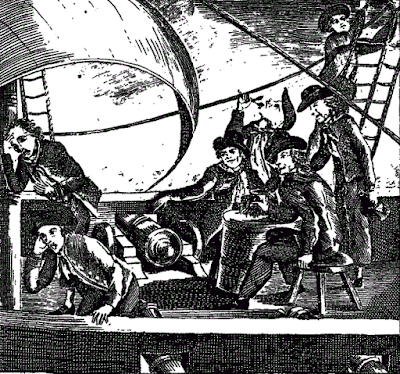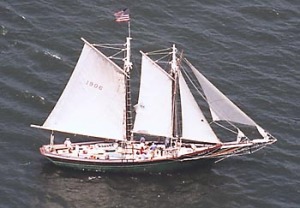Updated data on midshipman George Tryon… Thank you Cheryl W!
Quasi-War Veteran Story!
Rolling Jack
This is one of my favourite blog sources… In case you’d like to peek into a bit of my world.

Moses Tryon and the St-Domingue Trade
Having made unexpected contact with a descendant of the business associate and friend of Moses Tryon – MaDame Le Gras – I have exchanged my data for hers and discovered something quite unexpected… Long story to explain but in a short window, she was to have died on the opening hours of the slave insurrection in St-Domingue (Haiti) of the night of 22 Aug 1791… But it turns out that she survived and removed with masses of refugees to New Orleans, there to live out her life. As I digest the new documents as well as even more data on Moses himself, it has greatly broadened the vista of the Tryon story for me. In my 2d draft I have yanked out a chapter, divided it into two, and have already been rewriting it joyfully! The search goes on for a (possible) surviving portrait of Moses, and I am still waiting to hear from some descendants regarding the digitizing of family documents that may make the overall scene clearer… This has been an exciting project and while I have indeed been taking forever to complete this, I am glad for it as I would not have had this new data in hand… So, draft #2 is becoming draft #3 rapidly.
I still encourage those of you who are descendants or have information regarding Moses Tryon of Wethersfield or people closely associated with him to contact me and open a dialogue! Some of you have and this has been wonderful! A couple of people have sent me an opening message, never to be heard from again, alas!
The Location of Jepson’s Tavern
This article is currently being rewritten to reflect the latest evidence and my conclusions. Please visit again soon to see if I have posted the new article.
The Gildersleeve Shipyard
Rick Gildersleeve is a descendant of Philip Gildersleeve – the man who was the subcontractor/foreman for the building of the USS Connecticut. On the evening of 16 June, Rick will be giving a presentation for the Portland, CT Historical Society regarding the family shipyard. This will touch on some fascinating local history and I think should not be missed. Rick may even touch upon the Connecticut.
<<The Gildersleeve Shipyard
Friends of Portland Library and the Portland Historical Society present “The Gildersleeve Shipyard” by Rick Gildersleeve, Tuesday, June 16th at 7 p.m., in the Mary Flood Room, Portland Library, 20 Freestone Avenue, Portland CT. The presentation will cover the entire life of the Gildersleeve Shipyard including an extensively illustrated discussion of the development of shipbuilding on the Connecticut River through the “Golden Era” of the 18th and 19t…h centuries; related Gildersleeve businesses such as the store and lumber acquisition and the history of the ship The USS Cayuga by RG Skerrett (c 1900) shown below which was built in the Gildersleeve Shipyard and played a critical role in the Civil War. Come join us for this fascinating look at a pillar industry in the development of Portland, CT and the Connecticut River. Door prizes, from Gotta’s Farm will be given away at the end of the program. This is a free event. Registration is suggested but not required. To register, go to portlandlibraryct.org and click on the library calendar or call 860-342-6770.>>
Getting back on track
Real life has a way of tearing you from the things you love most to do, which is a partial explanation of why this overall project has been taking so long. However, recent inquiries into Owen Tudor, Louis Manierre, and Capt. Tryon have brought me back on track when two jobs and other obligations allow. Not least of which is the nagging misinformation from the late 19th century which has caused great confusion regarding Moses and his family line – No, Moses was not in the Barbary Wars. No, Moses Jr. did not marry an Ann Tryeon or any other variant spelling of the name, nor was she his child by another – that was his half-sister and the misconception there is a result of the 1890’s mis-transcription of Nancy/Ann’s gravestone by E S Tillotson – so for all of you claiming descendancy from this fictional union on your Ancestry.com charts, I bring you bad news…
On the other hand, the biography of Capt. Tryon is back on track, undergoing that second re-write in which I am inserting some relevant information of the era to explain what and why for Moses’ activities. The genealogical data for several generations is essentially complete, which will comprise the second section of the book.
I have also been reviewing my data on Seth Overton – the contractor for the building of the ship Connecticut, and of Silas Butler – the purser of the vessel and later the purser for the Navy Yard in Brooklyn, NY. I’ll be adding some general data to this site regarding them, and assembling bios for them that may or not become books in their own right.
Please continue to contact me should you have thoughts or questions, and if you are a descendant of any of these men, please DO contact me!
Subscriptions
As with a few other sites that I manage, the subscriber option has not worked the way it was intended. Additionally, there are many who have subscribed only to hammer away at the site to see if they might break in and spam the whole thing to death. That said, I regret that I must shut down the subscriber option for now. If you wish to receive updates you can contact me directly and I will put your e-mail address on a secret list and blind-courtesy-copy you each time something new happens. I apologize for any inconvenience.
Experience
So recently I was permitted to volunteer aboard the gaff-rigged schooner Mary E as she sails out of Essex, CT. Periodically Captain Dan sends me a text and off I go after my day job is done; the crew have been very patient and gracious with me as I try to gain some first-hand experience of what being a ship hand sailing the CT must have been like. While I juggle other projects and aspect of life, slowing down the writing process for this book, things like being something of an honourary crewmember really helps to bring my mind back to the big project! The crew are also inspirational, teaching me things about the culture of the river that I simply had no way of knowing otherwise. I find myself to be deeply grateful to them all, captain and crew.
Crewmembers
I have posted a bit more about some of the crewmembers, prompted by a realization that I am overwhelmed with the various plans for the greater project and it is necessary to get some of the information out. Genealogical requests prod me towards this! I hope that what I post is of some help in these cases. PLEASE contact me to open conversation about these men, especially if you are copying the information I have posted! Just “leave a reply”.


